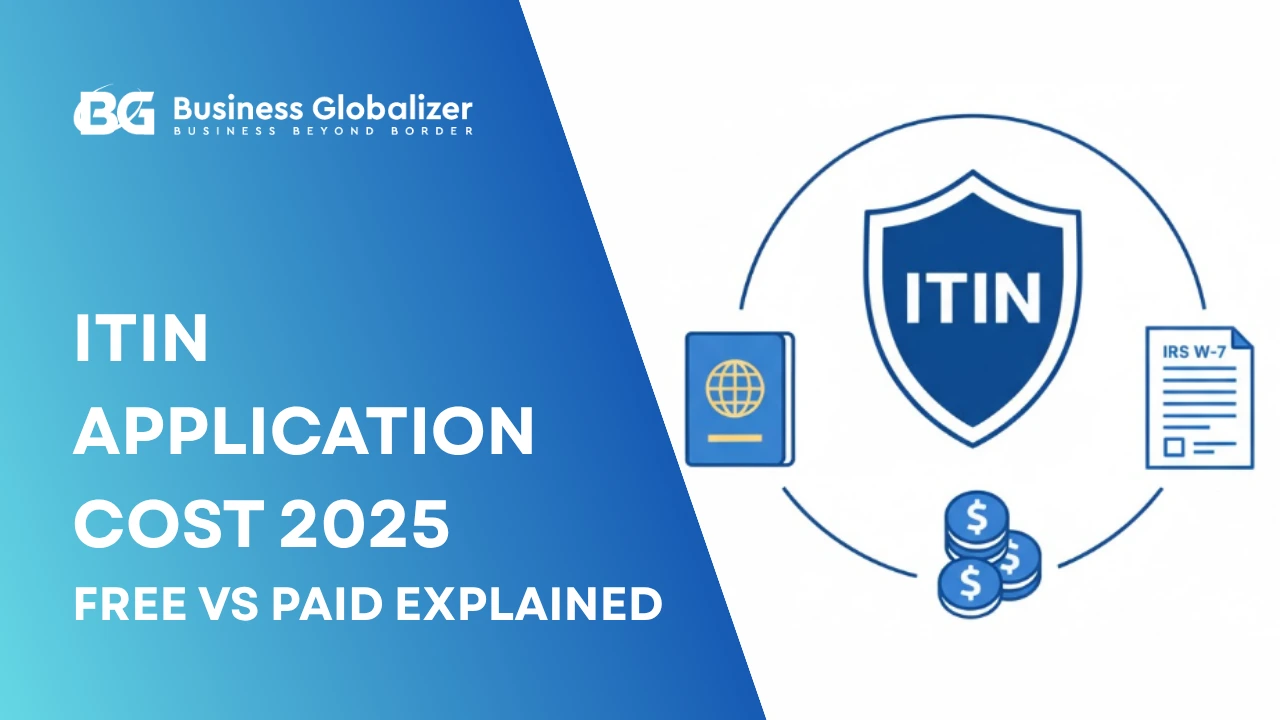Hello, there!
Are you considering starting a registered business with your trusted and potential partners, but you are not sure how to handle taxes? Do not worry; taxes can be quite overwhelming. We all understand that. Assuming your situation, we might have a perfect solution for you: A multi-member LLC.
Multi-member Limited Liability Companies (MMLLC) provide a great balance between management flexibility and personal asset protection from corporate liabilities. However, if you are unfamiliar with the rules and regulations, understanding the tax side of things can be a little complicated and, of course, confusing.
Now, don’t worry; everything is totally under control! In this blog, we will cover everything you must know about multi-member LLC tax filing, from the basics to the best tips for getting it right. Ready to simplify your business taxes and avoid any costly mistakes? Let’s dive in!
Multi Member LLC
Let’s start with the very basic knowledge related to today’s blog: LLC.
An LLC or Limited Liability Company is a popular business structure in the United States that protects the owner’s personal assets. This business structure also offers flexibility in management and taxes. There are two primary types of LLCs:
- Single-member LLCs, which have one owner, and
- Multi-member LLCs, which have two or more owners.
Now, as the blog title demands, let’s focus on multi-member LLCs.
A multi-member limited liability company (MMLLC) combines the flexibility of a partnership with the limited liability of a corporation. This means your personal assets are often safeguarded if the business experiences legal issues. Unlike a sole proprietorship or a single-member LLC, the IRS treats a multi-member LLC as a partnership.
For tax purposes, all of the profits and losses from this business structure are passed through to the owners to be reported on their personal tax returns. This setup makes managing taxes simpler while still offering the legal benefits of an LLC.
Understanding Multi-Member LLC Tax Filing
So, assuming you are clear on the concept of a multi-member LLC, let’s move forward to the taxation part.
Filing taxes for a multi-member LLC (MMLLC) is quite simple once you understand the basics. By default, the IRS treats an MMLLC as a partnership, meaning all the profits and losses pass directly to the owners of the company, who report them on their personal tax returns—no double taxation here!
However, you can choose to have your MMLLC taxed as a corporation. Deciding which route to take depends solely on your business goals and financial strategy, so it’s worth considering your options carefully.
Let’s put a short note here: A C corporation could lead to corporate double taxation, where the business pays taxes on its income and the owners pay taxes on dividends.
Single Vs. Multi-Member LLC Taxes
We mentioned “single-member LLC,” right? Then let’s briefly discuss the tax contrast between these two types of LLCs (single-member LLC and Multi-member LLC).
When it comes to taxes, single-member and multi-member LLCs have a lot in common, but there are a few key differences as well. A single-member LLC is taxed as a “disregarded entity,” meaning the IRS treats it as if it doesn’t exist separately from its owner. In contrast, a multi-member LLC is typically taxed as a partnership, with profits and losses passing through to each owner’s personal tax return.
Either way, the taxes are paid at the personal level, not by the LLC itself, making the process straightforward but with a few unique twists depending on your LLC type.
Well, the abovementioned is just the one difference between these two structures; the concept of Single-member LLC vs. Multi-member LLC is a bit more than that.
Multi or Multiple Member LLC Taxation Example
Okay, let’s imagine a situation where we have a multi-member LLC and we will use a simple scenario to illustrate it. Imagine Suzana and Mushi. They both own a multi-member LLC together. Suzana owns 60% of the company, while Mushi owns 40%.
Let’s say their company makes $100,000 in profit every year. The profit would be distributed among the owners in the following way:
| Owner | Ownership Percentage | Profit Share |
|---|---|---|
| Suzana | 60% | $60,000 |
| Mushi | 40% | $40,000 |
Classification for a Multi-Member LLC Taxes
For a multi-member LLC, the usual way it is taxed is by operating as a partnership. This means the LLC itself doesn’t pay income taxes directly. Instead, the profits and losses are passed on to the members, who then report these on their personal tax returns. This approach helps small businesses by avoiding double taxation that is often faced by corporations. It also simplifies the process of tax filing, making it more cost-effective for small businesses.
However, your LLC doesn’t have to stick with the default. You can opt for a different tax route by electing to be treated as either a C corporation or an S corporation.
Filing as a C Corporation
If you decide to file IRS Form 8832, your LLC can be taxed as a C corporation. This means the LLC itself pays taxes on its profits, but be aware of the double taxation here—once at the corporate level and again when dividends are paid to members. That said, it does offer perks like more deductible expenses and the ability to retain earnings within the company, which can sometimes reduce the total tax bill.
Filing as an S Corporation
Electing S corporation status with IRS Form 2553 allows your LLC to maintain pass-through taxation while potentially cutting down on self-employment taxes. Unlike a C corp, an S corp doesn’t pay taxes at the corporate level, and any additional profits distributed as dividends aren’t subject to self-employment taxes.
Each option has unique advantages, so consider which tax classification best aligns with your business strategy.
Note: S corporations are for only SSN holders. Nonresidents are not eligible to form or elect one.
Benefits of Multi-Member LLC Tax Filing
Filing taxes as a multi-member LLC comes with several advantages. Take a look below to learn about those:
- Pass-Through Taxation: A major benefit is pass-through taxation. Your LLC doesn’t pay corporate taxes. Instead, profits and losses are reported directly on each member’s personal tax return, which helps you avoid the double taxation that corporations often face.
- Flexibility in Tax Classification: You also have the option to be taxed as an S corp or a C corp, giving you the flexibility to choose the tax structure that best fits your business needs.
These benefits make multi-member LLCs a smart choice for keeping taxes straightforward and avoiding unnecessary costs, making tax season a bit smoother and easier to handle.
Tax Obligation of Each Member of a Multi-Member LLC
When you’re part of a multi-member LLC, your tax obligations are unique because these businesses are considered pass-through entities. Here’s what you need to know:
- Schedule K-1: Each year, you’ll get a Schedule K-1 form showing your share of the company’s profits or losses. This share is typically based on your ownership percentage in the LLC, but sometimes it could differ as specified in the operating agreement.
- Paying Taxes on Profits: Even if you didn’t receive your full share of the profits as a payout, you’re still responsible for paying taxes on it. So, plan ahead!
- Self-Employment Taxes: Since LLC members aren’t employees, you’re also on the hook for self-employment taxes, which cover both Social Security and Medicare. This means you’ll need to pay both the employer and employee portions.
How Does a Multi-Member LLC File Taxes?
Filing taxes for a multi-member LLC can seem tricky. But don’t get alarmed! As it’s totally manageable once you know the steps. Here’s how it works:
- Default Tax Treatment: By default, the IRS treats a multi-member LLC as a partnership. This means the LLC itself doesn’t pay taxes directly. Instead, it files Form 1065, which reports the business’s profits, losses, and deductions.
- Schedule K-1: After filing Form 1065, the LLC prepares a Schedule K-1 for each member. This form shows each member’s share of the business’s income, deductions, and credits, which they report on their personal tax returns.
- Other Tax Options: Multi-Member LLCs can choose to be taxed as an S-Corporation or C-Corporation by filing IRS Form 2553 or Form 8832, respectively. S-Corp status keeps pass-through taxation but lets active members be treated as employees. C-Corp status might be beneficial if you plan to retain earnings in the business.
It’s not as complicated as it sounds, and understanding your options can make the process smoother.
Multi-Member LLC Tax Filing Deadline, Rates, Requirements, and Forms
Deadline: When it comes to filing taxes for a multi-member LLC, timing is everything. The tax filing deadline (as a partnership) is usually March 15th each year—without an extension. With an extension, the deadline is September 15th. If you choose to file your taxes with an S corporation, the deadline for the tax filing is the same as with a partnership. If your chosen structure is a C corporation is April 15 without an extension. With an extension, the deadline for filing is October 15.
So, mark your calendar, as missing this date could lead to huge penalties!
Rates: As for tax rates, remember that a multi-member LLC itself doesn’t pay taxes. Instead, profits and losses pass through to each owner, who reports them on their personal tax returns. This setup can help avoid double taxation.
Forms:
- For a partnership: IRS Form 1065.
- For S corporations: Form 1120S.
- For C corporations: Form 1120.
Don’t forget the requirements: Besides Form 1065, you’ll need to provide each member with a Schedule K-1, showing their share of the profits and losses. The required documents are included, but are not limited to:
- Your Company Details & Owner Details.
- All the Transaction Details.
- Profit and Loss (P&L) Statements.
Staying organized with these forms and deadlines will keep your tax season stress-free. If things get tricky, a tax professional is always a good call!
Common Mistakes to Avoid in Multiple-Member LLC Taxation
Navigating the tax responsibilities for a multi-member LLC can be a bit of a minefield, but steering clear of these common mistakes will save you a lot of trouble:
- Ignoring Payroll Tax Obligations: Even if you don’t have any employees other than the members, you must still manage payroll taxes if your LLC hires someone. This means that you must regularly withhold and pay Social Security, Medicare, and unemployment taxes. If you choose to skip these, you may face severe penalties, interest charges, and even legal consequences.
- Going It Alone Without Professional Help: Taxes and payroll can get complicated quickly. Hiring a reliable payroll service or accountant can help you stay compliant, avoid mistakes, and free up your time to focus on growing your business.
- Mixing Business and Personal Finances: Make sure to keep your LLC’s finances separate from your personal accounts. This is crucial for protecting your personal assets and maintaining your LLC’s limited liability status.
- Missing Tax Filing Deadlines: Not filing your LLC’s tax returns on time can result in significant fines and penalties. Be aware of your deadlines and try to file early to avoid any last-minute panic.
Avoid these mistakes, and you’ll keep your multi-member LLC on solid ground when it comes to taxes!
Multi-Member LLC Tax Filing Tips for Proper Accuracy
Keep your multi-member LLC’s tax filing smooth and accurate with these simple tips:
- Stay Organized: Keep all receipts, invoices, and financial records well-organized throughout the year. This makes tax time less stressful and helps avoid mistakes.
- File on Time: Mark your calendar with tax deadlines to avoid late fees and penalties. Early preparation is key to a stress-free filing process.
- Consult a Professional: Work with a tax advisor or accountant who understands multi-member LLCs to ensure all forms are filled out correctly and that you’re taking advantage of any deductions.
- Double-Check Everything: Before you submit, double-check your numbers and forms. Small errors can lead to big problems, so it’s worth the extra effort.
By following these tips, you can ensure your multi-member LLC’s tax filings are accurate and hassle-free.
Get Help: Business Globalizer Is Here
Staying ahead of tax deadlines is essential, but mastering tax filing isn’t that mandatory—especially when you don’t have that time to spare. It’s okay to leave the taxing things to the experts.
With Business Globalizer’s thorough bookkeeping and all-in-one taxation service, you’re set from day one to year-end. We’ll wrap up your books with a complete financial package, and we’ll even file your taxes for you. Plus, you’ll get to discuss your confusions and queries with a tax expert to navigate your business decisions with ease.
FAQs
Q1: How many members can a multi-member LLC have?
Answer: Most states don’t set a cap on the number of members an LLC can have, so you can include as many members as your business requires. These members can be individuals, corporations, other LLCs, or even foreign entities, giving you plenty of flexibility in structuring your LLC.
However, be sure to check the specific rules in your state, as there might be some unique regulations. Also, keep in mind that if your LLC chooses to be taxed as an S corporation, the IRS limits the number of shareholders to 100, and all members must be U.S. citizens or resident aliens.
Q2: Multiple-member LLC taxation in texas: how does it work?
Answer: In Texas, multi-member LLCs are generally treated as partnerships for federal tax purposes, meaning the LLC itself doesn’t pay federal income taxes. Instead, the profits and losses are “pass-through” to the owners, who then report them on their personal tax returns. Texas itself doesn’t have a state income tax, so the members of LLCs only deal with federal taxes.
However, Texas requires LLCs to file a Texas Franchise Tax Report, which is based on the LLC’s revenue. Make sure to stay compliant by filing this report annually to avoid penalties.
Q3: How do I add another owner to my LLC?
Answer: To add another owner to your LLC, you can follow the below-mentioned steps:
- Review Your Operating Agreement: Check your LLC’s operating agreement for the procedure to add a new member. If you don’t have one, follow your state’s LLC laws.
- Discuss Ownership Details: Decide on the new owner’s percentage of ownership and how profits and losses will be shared. Get agreement from all existing members.
- Amend the Operating Agreement: Prepare an amendment that includes the new owner’s details and have all members sign it.
- File Required Documents: Depending on your state, you might need to amend your Articles of Organization and file necessary tax forms, such as obtaining a new EIN if you’re moving from a single-member to a multi-member LLC.
- Consider Legal Advice: It’s wise to consult a business attorney to understand the full impact of adding a new member.
Final Words
So, there you have it! Multi-member LLC tax filing might seem a bit daunting at first, but with the right steps and a little bit of planning, it can be straightforward. Remember, keeping everything organized, meeting deadlines, and maybe even getting a bit of professional help can make all the difference.
Your multi-member LLC deserves the best start, and understanding how to handle taxes is a big part of that. If you stay on top of these things, tax season won’t feel like such a headache. And if you ever feel unsure, don’t hesitate to reach out to us for guidance. With the right approach, handling your multiple-member LLC taxation can be simpler and hassle-free. Good luck, and happy filing!






